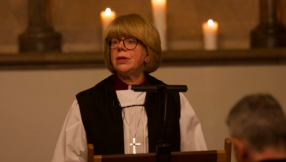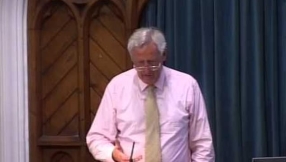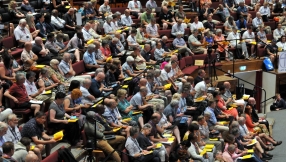US megachurches growing - and fast
Protestant congregations that already have at least 2,000 people in a typical weekend had an average rate of growth for five years of around 50 per cent. And over 20 per cent of megachurches experienced an increase of 100 percent. Slightly more than 10 per cent of the churches showed stagnation or decline.
The findings come from a study entitled "Changes in American Megachurches: Tracing Eight Years of Growth and Innovation in the Nation's largest-Attendance Congregations", which was released Friday.
The continuous growth in the size of megachurches comes as no surprise as they have shown increasing numbers over the last eight years.
But despite the bigger congregations, megachurches have not expanded their sanctuaries to accommodate the larger flocks.
Megachurches are "getting bigger without getting bigger", commented Warren Bird, co-author of the study.
The average weekend megachurch attendance in 2008 was 4,142. The average main sanctuary seating, meanwhile, was 1,794.
More churches are opting for different strategies when accommodating larger crowds. Some have turned to "overflow rooms" where attendants would typically watch the service on a video screen in a different area of the church. Many are holding multiple services with the average megachurch today conducting five weekend services, up from 2005.
But perhaps the newest growth method adopted by megachurches is satellite campuses.
Over the last five years, over 30 per cent of megachurches adopted the multi-site model compared to only 8 per cent 6 to 10 years ago and 3 per cent 11-15 years ago.
"There is no doubt that this phenomenon is an increasing reality judging by the percentage of megachurches that said they began a satellite in each of the past 5 year time periods," according to the report.
In 2008, 37 per cent of megachurches reported holding satellite services and 22 per cent were thinking about it. In 2000, only 22 per cent were multi-site and no other churches were thinking about pursuing it then.
On average, churches had two satellite locations and offered four services at these each weekend. Five per cent of megachurches, including New Life Community Church in Chicago, Illinois, Seacoast Church in Mt Pleasant, South Carolina, and LifeChurch.tv in Edmond, Oklahoma, had six or more campuses and offered between 12 and 24 services.
While some critics of multi-site churches believe such a growth strategy detracts from the church planting effort, the new study found that megachurches with satellite campuses were the most likely group to plant other churches.
Only 16 per cent of churches with multiple campuses never planted a church compared to 26 per cent of churches without satellite locations.
Over the last five years, nearly 60 per cent of multi-site churches have planted churches while 50 per cent of churches without satellites did the same.
Overall, church planting has grown among megachurches from 68 per cent in 2000, to 70 per cent in 2005, to 77 per cent in 2008.
Rise of the mini-denomination
Megachurches may be becoming de facto replacements for the more traditional denominations, researchers suggested.
Scott Thumma and Bird call it the rise of the "mini-denominations", although they are not necessarily fond of the term.
"Megachurches are creating around them structures and especially functions that once were done by the denominations," said Thumma, author of Beyond Megachurch Myths and a professor at Hartford Seminary in Connecticut, on Thursday.
Some of these structures include operating large networks of pastors and churches, providing clergy resources and music material, mobilising for community service and social justice efforts, and planting churches.
"They are creating alternative ways for churches and for religious people to get resources to do ministry, to do missions, to connect with other churches," noted Thumma.
"All the things that were typically done by a denominational form are being done at a local church level - if you can call a megachurch a local church," he added, noting the scale has shifted from the national hierarchical organisation to an informal, local church network.
Megachurches, however, are not the biggest threat to the life of denominations, Thumma indicated.
"In think it's probably less actual competition that's going to kill the denomination. There's a lot of other things that will kill the denominations," he said.
Other developing patterns among megachurches
In other findings, more megachurches are identifying themselves as "evangelical".
In 2000, less than half (48 per cent) chose the label "evangelical" but the number rose in 2008, with 65 per cent now taking on the label.
Fewer megachurches are choosing to identify themselves as "charismatic" or "pentecostal". Only 7 per cent chose the charismatic label in 2008 compared to 14 per cent in 2000, and only 4 per cent labelled themselves pentecostal compared to 11 per cent in 2000.
"The vast majority of megachurches have always held a conservative theological position, and this hasn't changed. But what has changed is a turn away from distinctive theological segments within conservative Protestantism toward a 'generic evangelicalism'," the study's authors stated.
A shift was also seen in political views.
The study stated that the majority of megachurch attendees are Republicans but "they are not the arch-conservatives many people portray them as".
Only 33 per cent described the majority of their church's attendees as predominantly conservative. Three years ago, 51 per cent had that label. Also, 44 per cent said their congregants are "somewhat on the conservative side" in 2008 compared to 33 per cent in 2005. And 17 per cent labelled their congregants as "right in the middle" while 11 per cent said the same three years ago.
Interestingly, the study also found that megachurches are not overtly political even during this year's election.
"The majority really want to stay out of politics as much as possible," said Thumma.
While keeping out of politics, megachurches are putting more emphasis on social justice and community service. In 2000, only 34 per cent affirmed their congregation was "working for social justice". In 2008, 51 per cent of churches affirmed this. Also in 2008, 73 per cent of the megachurches stated that community service activities were given a lot of programmatic emphasis in the past year or were a specialty of the church.
The megachurch study is based on a national study of America's roughly 1,200 megachurches with approximately one third returning a usable response to a survey conducted between February and August of 2008. Comparisons were given to similar national studies in 2000 and 20005.













